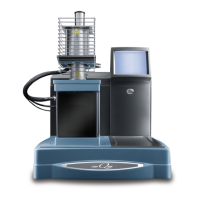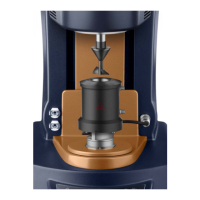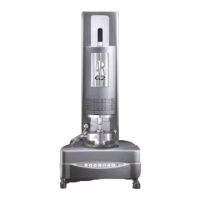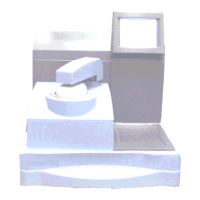TA I
NSTRUMENTS
TGA 2950 B–25
Hi-Res
TM
Option
weight change (%/minute) exceeds the specified
set point. In many cases the appearance of the
derivative curve can be improved by increasing
the derivative smoothing window in the data
analysis program.
Constant reaction rate mode works best at lower
heating rates (1 to 10
°
C/minute), where signifi-
cant reaction rate and transition temperature
overshoot can be avoided. Usually several scans
of the same material are required to determine
the best reaction rate threshold to use. If the
sample material is very reactive, or it is impor-
tant not to overshoot the selected reaction rate,
then even lower maximum heating rates may be
required.
This is particularly true for very small reaction
rates (less than 0.1 %/minute)
Since the heater control system concentrates on
a very narrow band of reaction rates, transitions
with slightly different reaction rates in the same
scan are often given very different treatment.
For example, a transition which falls short of the
%/minute threshold may be passed at a fairly
high heating rate, with results similar to conven-
tional constant heating rate TGA.
Whereas, a transition which just crosses the %/
minute threshold may cause a significant
reduction in heating rate or even reversal of the
heating process. The two transitions, although
similar in nature, may appear quite different on a
plot of weight change versus sample tempera-
ture. This effect can be observed in the weight
loss curve of figure B.10 (page B-49). Note that

